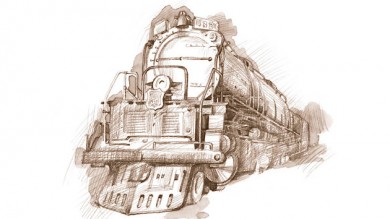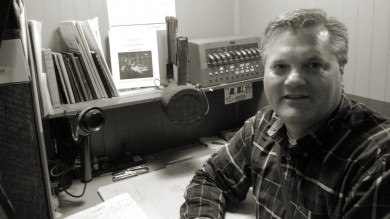Operation Department 1
Pacing devices, like junctions, seem to be used and thought of more in the planning stages of railroads. They allow operators more prototypical time to complete switching chores as well as provide for longer runs for mainline engineers....
Read MoreDispatcher’s Desk 14
I was reading some interesting letters that discussed the impact of real problems on a layout owner’s operations. The general thread of the discussion focused on how the prototype railroad would respond to a similar event. What havoc would this unleash on the scheduled trains, the con...
Read MoreDispatcher’s Desk 13
Operations can be somewhat intimidating. No matter how much you know about trying to emulate prototype practice on a layout, it will still make you nervous the first time you operate on a layout that is not yours. But this experience can be both fun and educational. Recently I went to...
Read MoreDispatcher’s Desk 12
I wonder how many of us who model passenger operations from the pre-Amtrak era model one of the important aspects of their operations. One of the most important aspects of a passenger train, at least to the accounting department, was the head end traffic. This traffic is the reason so...
Read MoreDispatcher’s Desk 11
You know, sometimes the hardest thing to do is what is normal, expected, and, routine. However, this is what we should strive for when we operate our railroads. The prototype railroads do the same thing day after day and for most of the railroaders the job can seem the same. Occasiona...
Read MoreDispatcher’s Desk 10
I attended the National Convention and Train Show in Long Beach, California and it was a fantastic experience. If you ever get the chance to go to a NMRA national convention, do go. It is an experience you will long remember. I attended many clinics and saw many sights. It was great t...
Read MoreDispatcher’s Desk 9
One item in railroading that is not often in the magazines is a discussion of signals and how they work on the prototype. What is often said by the modeler is “I operate in the dark,” or with CTC, or ABS, without much discussion of what these are and what they do. Perhaps it is best t...
Read MoreDispatcher’s Desk 8
One thing that has been constant since the early days of railroading is that a dispatcher controls the flow of traffic between interlockings. An interlocking is simply an intersection or union of two or more tracks. An interlocking is more than a section of railroad with multiple trac...
Read MoreDispatcher’s Desk 7
When we operate a model railroad, we try to simulate the operations of the prototype as much as possible. The “as much as possible” is dependent upon the tastes of the individual operators who gather to run a railroad. This will impact on the amount of paperwork and other ...
Read MoreDispatcher’s Desk 6
Last time I discussed freight operations and hinted at passenger operations. This time I am writing about the passenger operations. Passenger trains operated on a regular schedule (as opposed to steam runs which are popular today) can be of three types. There are commuter trains, whic...
Read MoreDispatcher’s Desk 5
In my first column, I wrote that railroads are in the business of making money by moving freight and passengers (which can be thought of as a type of freight with certain requirements concerning movement). The manner in which the freight is originated and terminated uses a train known...
Read MoreDispatcher’s Desk 4
As I was driving down the road the other day, I was thinking about what I would write in this space. I was having a hard time thinking of a topic that I could write about. At that moment I realized this was a “problem,” and my mind wandered to the thought of some of the operational pr...
Read MoreCopyright © 2025 Gateway Division NMRA. All rights reserved. | Website Info | Legal Notices






